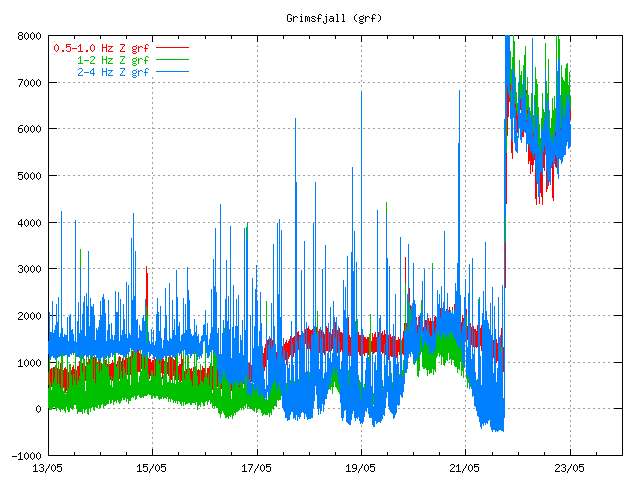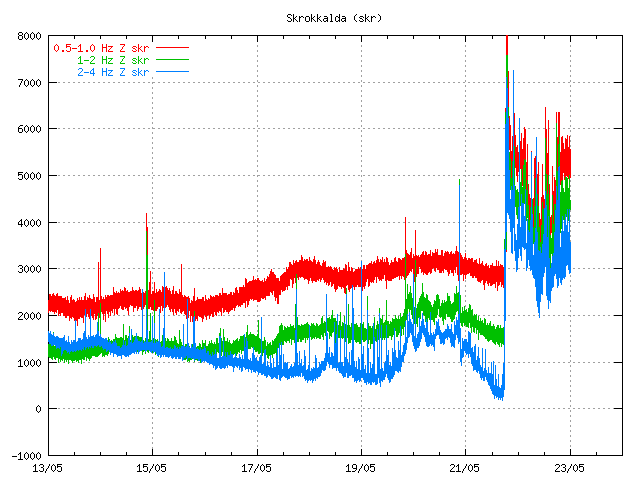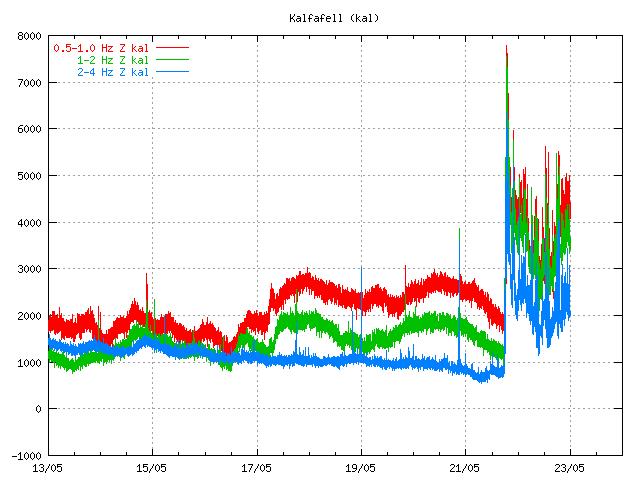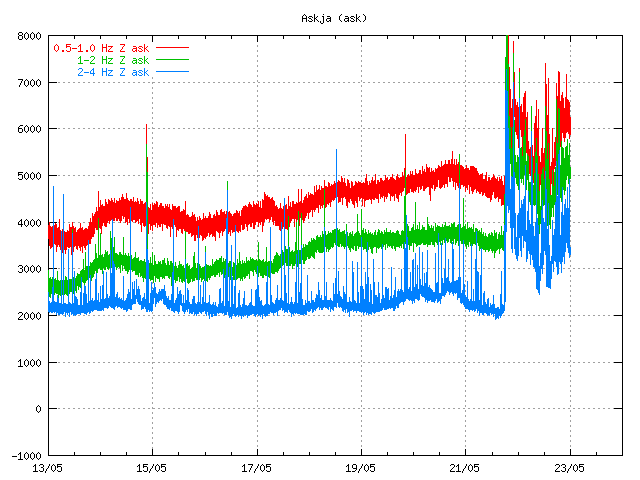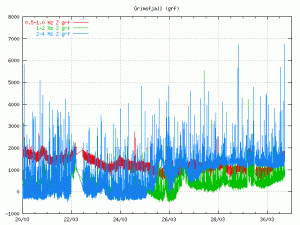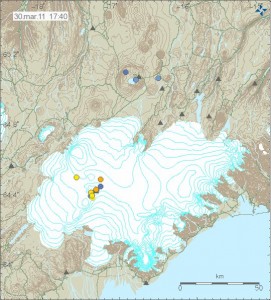Given the current tremor plot on Icelandic Met Office and with reports it seems that the eruption in Grímsvötn (Grímsfjall volcano) is about to be over for now. It is impossible to know if the eruption is going to resume soon or not. But at the moment this eruption seems to be over as it looks now. If it remains like that has to be seen however.
This drop in the eruption has been confirmed by Icelandic Met Office tremor plots.
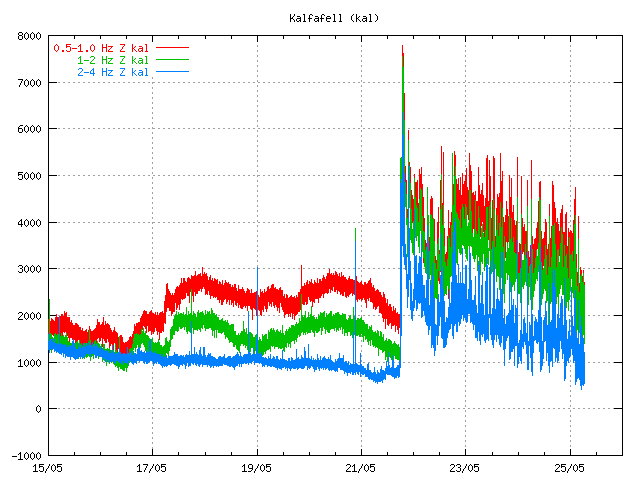

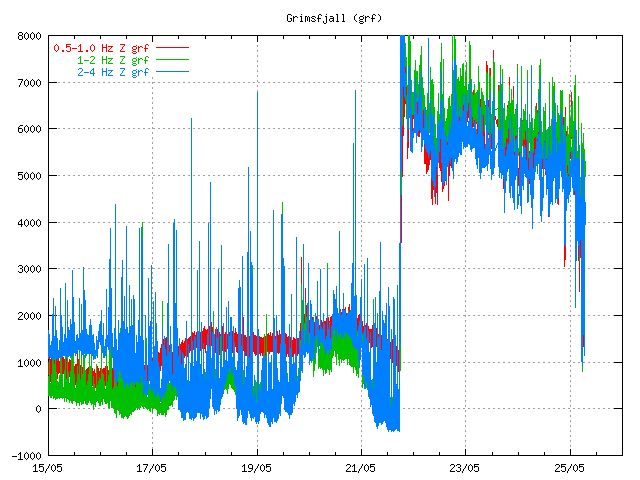
Tremor plots as of 07:00 UTC. This tremor plots are from Icelandic Met Office web site. Copyright of this pictures belongs to Icelandic Met Office.
Early news this morning in Iceland reported that steam was only coming from the main crater of Grímsvötn.
Other interesting development is that an earthquakes have started to appear SSE of Grímsfjall volcano (Grímsvötn). It is unclear why earthquake are happening at this location. But dike intrusion at this location is not impossible.
The reason for flight problems in Europe is because of the volcano ash that was ejected into atmosphere in the first days of the eruption. It is going take few days for that volcano ash to disappear from the air. Until that happens, it is going to create problems for air traffic.
Update 1: Even if the eruption appears to be over the tremor is still high. I do not know why that is. It is a question why that is or if this is just break in the eruption or not. Only time is going to tell what happens next.
Update 2: There was an news report this morning that before 02:00 UTC there was an spike in activity in Grímsvötn that did shoot the ash cloud up to 8 km. But that spike did only last for few moments before it was over. Rúv has released video here (Windows Media Player) of the eruption site.
Updated at 07:37 UTC.
Updated at 07:50 UTC.
Updated at 08:33 UTC. Blog post title updated.
Updated at 11:42 UTC.
Updated at 12:23 UTC.




